When planning a trip to Ireland, you will already have a list of famous destinations you will want to visit, fantastic attractions such as the Ring of Kerry, the Cliffs of Moher, and the Guinness Storehouse must be included in your Ireland itinerary. Of course, they are all worth visiting, but there are so many more hidden gems to explore in Ireland that are just as amazing, if not better.
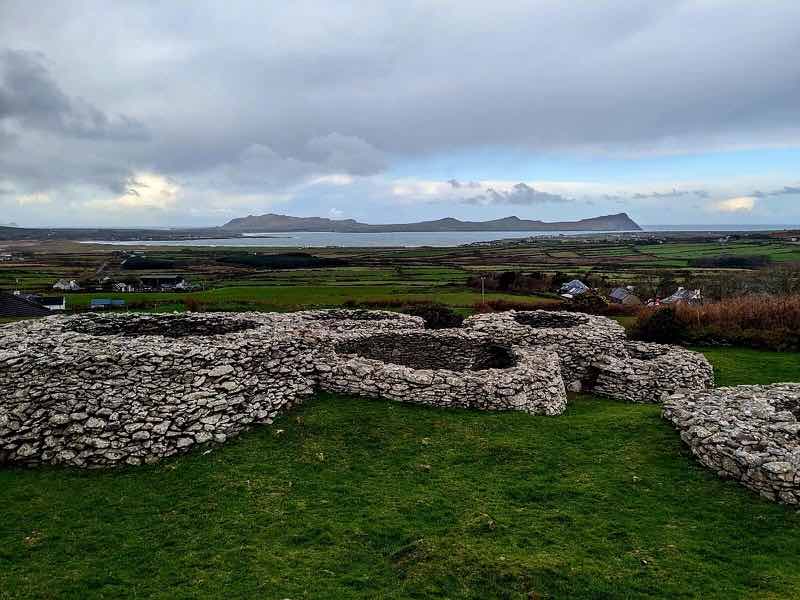
Slea head Drive
Table of contents: ()
- Ireland’s Hidden Gems Guide
- Kilmainham Gaol: The Irish Revolution
- The Wicklow Mountains – The Emerald Hills
- Drombeg Stone Circle – Mystical Ancient Ruins
- Skellig Islands – A Majestic Monastery
- Slea Head Drive – The Best Kerry Road Trip
- Aran Islands: A Trip Back In Time
- Ben Bulben – Ireland’s Table Mountain
- Slieve League Cliffs – Europe’s Highest Sea Cliffs
- Mussenden Temple – Cliffside Architectural Marvel
- Newgrange: Ancient Passage Tomb of Ireland
- Conclusion
Ireland’s Hidden Gems Guide
In this Ireland travel guide, we want to introduce you to ten must-see sights in Ireland that are absolutely worth visiting. Yet, for some reason, they often go unnoticed when tourists visit the Emerald Isle. From ancient megalithic monuments to historic sites, stunning natural landscapes, and charming towns, we’ll introduce you to ten spectacular Ireland attractions that often get overlooked. These hidden gems offer a unique glimpse into Ireland’s rich history, culture, and natural beauty, making them a must-visit in Ireland for anyone looking to explore the country beyond the famous tourist landmarks.
Furthermore, we will tell you of local travel tips, and other worthwhile attractions in the area. Starting in Dublin, the capital of Ireland, the list explores the best of Ireland’s hidden gems in a clockwise direction before finishing back in Dublin. So grab your notebook and map as you are about to find out some of the best of Ireland’s less-discovered destinations.

photo courtesy of Michelle Jensen from Travel HerStory
Kilmainham Gaol: The Irish Revolution
Dublin City is a great starting point for exploring Ireland. Many tourists start and finish their Ireland itinerary here. However, due to limited time, they often only visit Trinity College and the Book of Kells, the Guinness Storehouse, and indulge in a few more pints in the Temple Bar area afterward. But did you know this part of Dublin was once a warzone?
On Easter Monday, 1916, Padraig Pearse stood outside the General Post Office (GPO) in Dublin and proclaimed Ireland a free and independent state. This historic declaration marked the beginning of the Easter Rising, a rebellion against British rule that would ultimately lead to Ireland’s independence. Sadly, just a few days later, Padraig Pearse and 13 other leaders were executed by the British forces in the courtyard of Kilmainham Gaol, one of Ireland’s hidden gems.
Whether you are interested in Irish history or not, visiting Kilmainham Gaol is a must when you are in Dublin. Guided tours will take you through the former prison and show you where Irish leaders were held and executed. Besides political prisoners, you will also learn about ordinary citizens who were held here, some as young as 7 years old!
To understand more about the Easter Rising and Kilmainham Gaol listen to the songs “Grace” and “James Connolly”. It is now also possible to take a tour of the GPO and learn where Ireland’s bravest men stood and fought for freedom.

Glendalough
The Wicklow Mountains – The Emerald Hills
Just an hour’s drive from busy Dublin, a different world awaits in the Wicklow Mountains. This beautiful region is packed with breathtaking views, landscapes, and historic attractions, making a great day trip to include on your Ireland itinerary. One of the main attractions in the Wicklow Mountains is the Glendalough Valley and the famous Glendalough monastery. Founded by Saint Kevin in the 6th century, its well-preserved ruins and famous round tower showcase Ireland’s rich cultural heritage. Visitors can explore the historic monastic settlement for free.
The Wicklow Mountains are also home to the stunning Powerscourt Estate, which boasts some of the most beautiful gardens in the world. In fact, it was once ranked third in the world by National Geographic. Furthermore, you can also visit Powerscourt Waterfall within the grounds. Cascading from a height of 121 meters (398 feet), it is one of the highest waterfalls in Ireland.
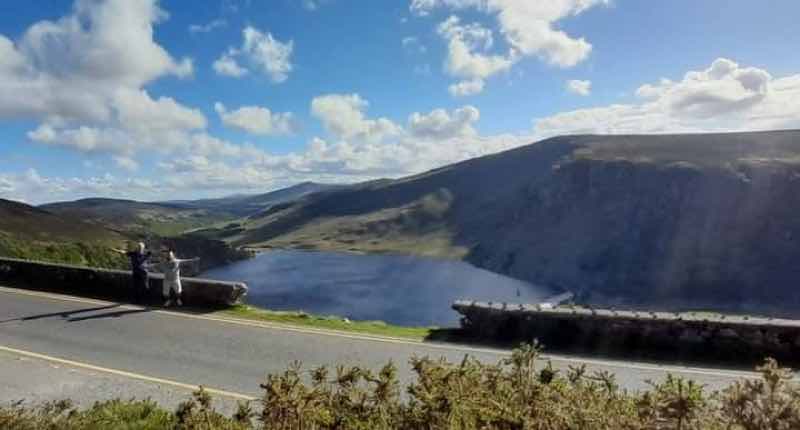
Lough Tay Viewing Point
Finally, no visit to the Wicklow Mountains would be complete without a visit to the Lough Tay Viewpoint. Perched atop a hill overlooking the lake, this viewpoint offers breathtaking views of the lake and the surrounding mountains. Lough Tay is also known as the “Guinness Lake,” because of its dark waters and white sands resembling a delicious pint of Guinness.

Drombeg Stone Circle
Drombeg Stone Circle – Mystical Ancient Ruins
The next must-see attraction of Ireland’s hidden gems is a megalithic monument built over 3000 years ago in Ireland’s largest county of Ireland, County Cork. This is the Irish version of Stonehenge – The Drombeg Stone Circle. The Drombeg Stone Circle is made up of 16 standing stones and one flat stone measuring 3.5 meters in diameter giving it the nickname, The Druids Altar. In ancient Celtic times, this particular stone would have been used as both an altar for ceremonial and astronomical activities.
Despite lacking the modern technology we have today, the builders of the Drombeg Stone Circle had an impressive knowledge of astronomy and natural cycles. For instance, they were aware of events like the winter solstice. During this period, the setting sun perfectly aligns with the Druid’s Altar stone and the circle’s entrance.

Charles Fort – Kinsale
If you get to witness this event consider yourself very lucky, remember you are in Ireland, and rain is more likely than a setting sun. Driving to the Drombeg Stone Circle from Cork City, Ireland’s second-largest city takes over an hour. While it’s possible to drive there directly from Cork City, the best way to visit this must-see sight in Ireland is to include it on a day trip, starting in the historic town of Kinsale.
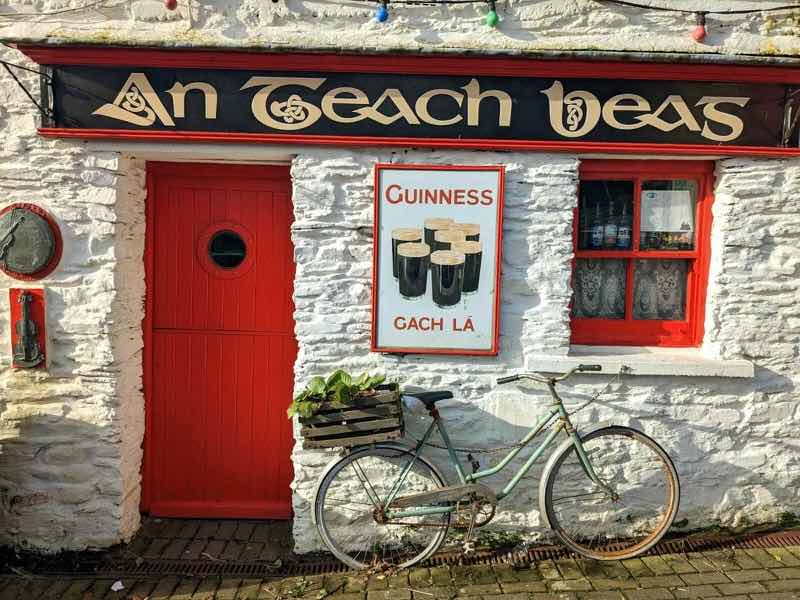
Clonakilty
Kinsale is a gorgeous town with picturesque streets, colorful buildings, and historic landmarks such as Charles Fort and The Oldhead of Kinsale. From Kinsale, continue to Clonakilty, the birthplace of Irish revolutionary leader Michael Collins, before proceeding on to the Drombeg Stone Circle. Lastly, head to the nearby Knockdrum Stonefort, another remarkable ancient Celtic site. Saving the best news until last, all four attractions – Kinsale, Clonakilty, Drombeg Stone Circle, and Knockdrum Stonefort – are completely free to visit.
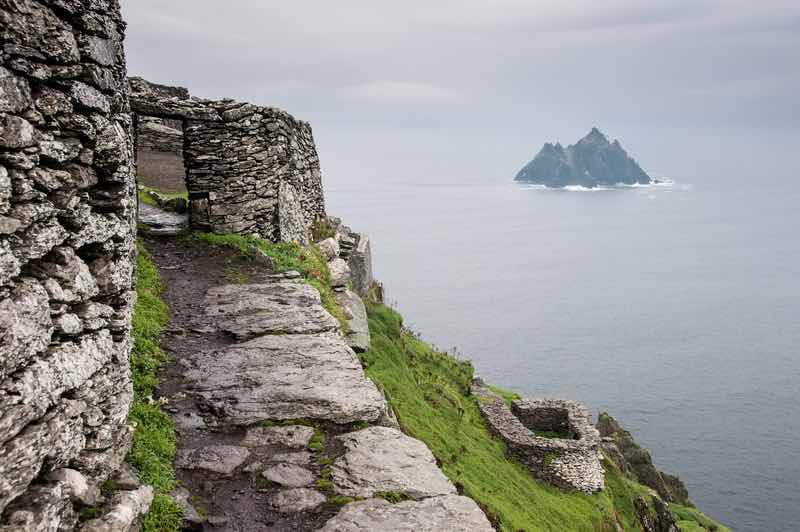
Skellig Michael – photo by Gary Arndt from the Everything Everywhere History Podcast
Skellig Islands – A Majestic Monastery
Despite having nearly 30,000 castles and castle ruins, cultural monuments, and diverse landscapes, it is surprising that Ireland only has two UNESCO World Heritage sites. Three if you count The Giant’s Causeway, but technically it’s located in Northern Ireland. The Skellig Islands are one of these UNESCO World Heritage sites and another one of Ireland’s hidden gems. Located 12 kilometers (7.5 miles) off the coast of County Kerry, the islands consist of two main islands: Skellig Michael and Little Skellig.
The main feature is Skellig Michael, an ancient monastery of unique stone beehive buildings built in the 6th century. These buildings were constructed using a technique that didn’t require mortar, and despite the harsh Irish weather they remain standing to this day in remarkable condition. You may be familiar with the unique stone beehive buildings on Skellig Michael, as they were featured in the Star Wars films “The Force Awakens” and “The Last Jedi.” The dramatic cliffs and ancient monastery of Skellig Michael provided a striking backdrop for scenes set on the planet Ahch-To, where Jedi Master Luke Skywalker was hiding.
Visiting Skellig Michael is only possible from May to October due to the strong Atlantic Ocean currents surrounding the islands. It’s essential to read the fine print when booking your trip, as not all boats offer access to the island. Additionally, Little Skellig is off-limits due to its inaccessibility. As a result, thousands of gannets made it their home and it is now a bird sanctuary to one of the largest gannet colonies in the world.

Slea Head Drive
Slea Head Drive – The Best Kerry Road Trip
Many travelers prioritize the Ring of Kerry in their Ireland itinerary, and rightly so. Unfortunately, another Irish road trip that is in County Kerry and our personal favorite often gets overlooked by travelers. The Slea Head Drive offers another one of Ireland’s hidden gems. When you imagine Ireland, you might picture fields of different shades of green, bordered by classic stone walls, with the occasional old abandoned cottage scattered in the distance, and that’s exactly what this scenic drive entails.
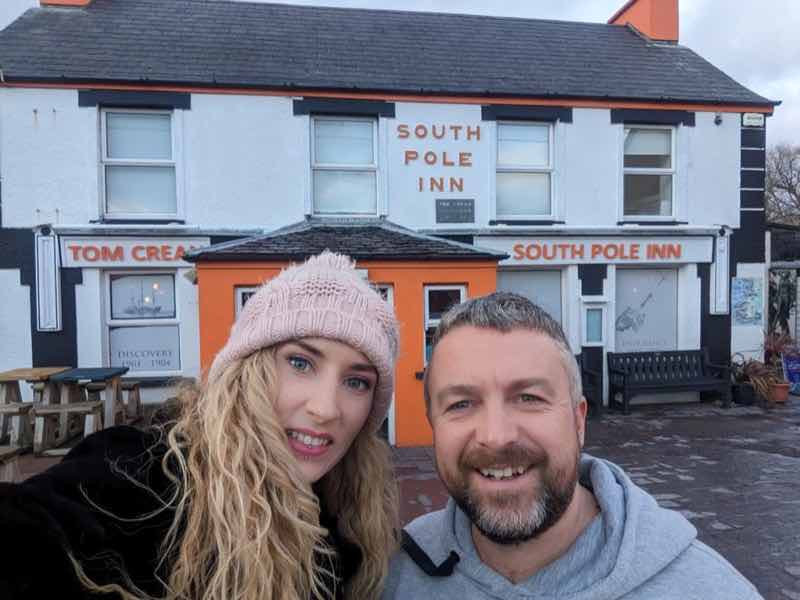
The SouthPole Inn
Start the journey in the town of Dingle, which will take one hour by car from Killarney. However, before arriving in Dingle, take a pit stop at the Southpole Inn, a pub once owned by the famous Irish explorer Tom Crean who is best known for his adventures in Antarctica with Sir Ernest Shackleton. The Slea Head Drive covers about 50 kilometers (30 miles) along the beautiful Dingle Peninsula and the Atlantic Ocean. Start the journey in a clockwise direction which will provide you with the best views and easy access to the many stunning stops along the way.
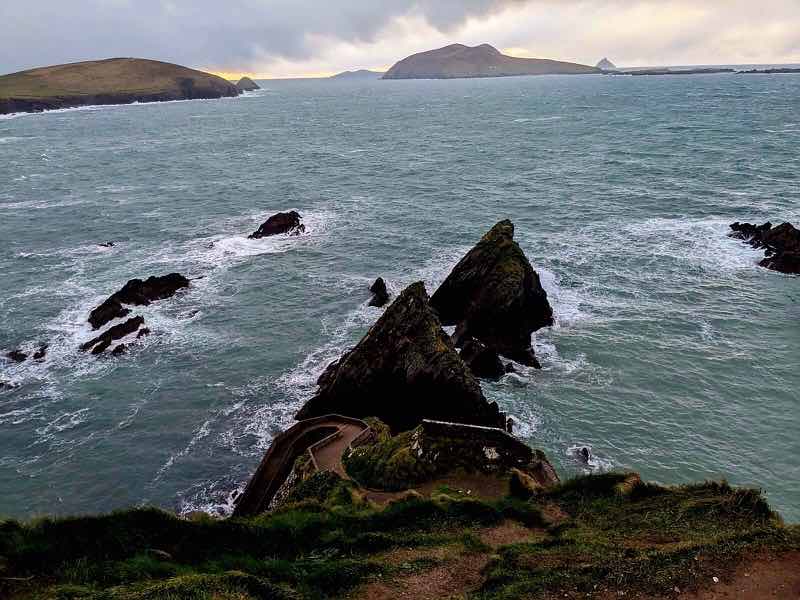
Dunquin Pier
As you drive along the scenic Dingle Peninsula, you’ll come across more of Ireland’s hidden gems such as Dunbeg Fort, a 1,000-year-old fortification that offers stunning views of the surrounding coastline. The Gallarus Oratory, a 12th-century church built out of stone, and at Dunquin Pier, our personal favorite, where you can take in one of Ireland’s most breathtaking scenery. Sounds all pretty amazing right? There’s one more highlight, Instead of finishing up in Dingle where Sleahead Drive starts and finishes, continue onto Conor Pass. On a winding road through one of Ireland’s highest mountain passes, discover more breathtaking views.

photo courtesy of Shandos Cleaver from travelnuity.com.
Aran Islands: A Trip Back In Time
Visitors to Ireland shouldn’t miss the Cliffs of Moher, a must-see attraction that offers stunning views of the Atlantic Ocean. On such days, you can spot three islands in the distance: Inishmore, Inishmaan, and Inisheer. Together they make up the Aran Islands, another one of Ireland’s hidden gems that don’t get the attention they deserve.
Exploring the Aran islands is like stepping back in time to experience “Old Ireland.” Each island has its own unique charm, yet they share common traits like Irish-speaking locals, traditional thatched cottages, unique karst landscapes, and ancient stone walls.
The largest island in the Aran Islands is Inishmore, and the must-see sight here is Dun Aonghasa, a 3,000-year-old stone fort built in a 180-degree shape on the edge of a 100-meter cliff. Inishmore also features a unique natural pool, known as the Serpents Lair, with its almost rectangular shape you would almost believe that it is man-made. Only those who are brave or mad jump into its waters for a refreshing swim.
On Inisheer, you’ll find the iconic shipwreck of the MV Plassy, which is featured in the opening credits of the popular TV show “Father Ted,” a hilarious Irish sitcom that lovingly pokes fun at Irish culture and traditions.
Inishmaan is the quietest of the three islands, with fewer tourist attractions compared to its sister islands. However, its untouched natural beauty and serene atmosphere make it a peaceful retreat for those seeking a more off-the-beaten-path experience.
All three islands can be accessed by ferry from Doolin and Galway, or you can opt for a more luxurious experience by flying from Connemara Airport, located near Galway City. There are daily flights to the islands.
Ben Bulben – Ireland’s Table Mountain
Located in County Sligo, Ben Bulben is a table mountain that stands tall at a height of 526 meters. Surrounded by breathtaking natural landscapes, it’s particularly well-suited for hiking enthusiasts.
However, if you’re not a fan of hiking, then embark on a scenic drive through the surrounding area. The main attractions to visit around Ben Bulben are Gleniff Horseshoe, Devil’s Chimney, Glencar Waterfall, Rosses Point, and Mullaghmore. All mentioned attractions are free to visit.
Ben Bulben is also a significant location in Irish literature and mythology. According to folklore, the table mountain is a place of enchantment and mystery, where supernatural beings are said to dwell. While it may sound morbid, the stunning landscape of Ben Bulben is connected to several notable graves.
In Irish mythology, it is believed to be the final resting place of the giant Fionn mac Cumhaill. As the leader of the Fianna warriors, a band of Celtic warriors, Fionn is famously associated with the creation of the iconic Giant’s Causeway on the Northern Irish coast.

Giants Causeway
Fionn was challenged by a Scottish giant named Benandonner to a fight. Not wanting to fight, Fionn retreated to Ireland and hid in a cave. His wife Oonagh then came up with the idea to disguise him as a baby. Benandonner made his way to Ireland and when he saw the size of the “baby,” he quickly retreated back to Scotland, destroying the causeway as he went. The remaining columns of rock are the Giant’s Causeway, a natural wonder and UNESCO World Heritage Site.
The famous Irish poet W.B. Yeats is also buried nearby. Ben Bulben is famously mentioned in W.B. Yeats’s poem “The Lake Isle of Innisfree” (1890). The poem is about the poet’s longing for a peaceful, isolated life on a lake island in Ireland, and Ben Bulben is mentioned as a distant mountain that the poet can see from the island. This poem is considered one of Yeats’ most iconic works.
We may as well continue with the subjects of graves, as Carrowmore megalithic cemetery is also nearby. Over 3000 years old, Carrowmore is composed of over 60 passage tombs, dolmens, and stone circles, making it one of the largest megalithic complexes in the world.
Despite sounding gloomy, Sligo and the nearby Ben Bulben are fantastic places to visit and more of Ireland’s hidden gems.
Slieve League Cliffs – Europe’s Highest Sea Cliffs
The Cliffs of Moher get all the attention and are considered a must-see sight to be included on an Ireland itinerary. Although a bit trickier to get to when compared to the Cliffs of Moher, Slieve League Cliffs is an unbelievable sight to behold.
Standing over 600 meters high, the Slieve League Cliffs are some of the highest sea cliffs in Europe and even surpass the Cliffs of Moher in height. Located in County Donegal, it takes about two hours to get there from Sligo Town and two hours from Derry. The route takes you through some of the most breathtaking landscapes in Ireland.
The Slieve League Cliffs are a public access area, and you can visit without paying a fee. However, if you want to park your vehicle in the designated parking area, there is a small fee.
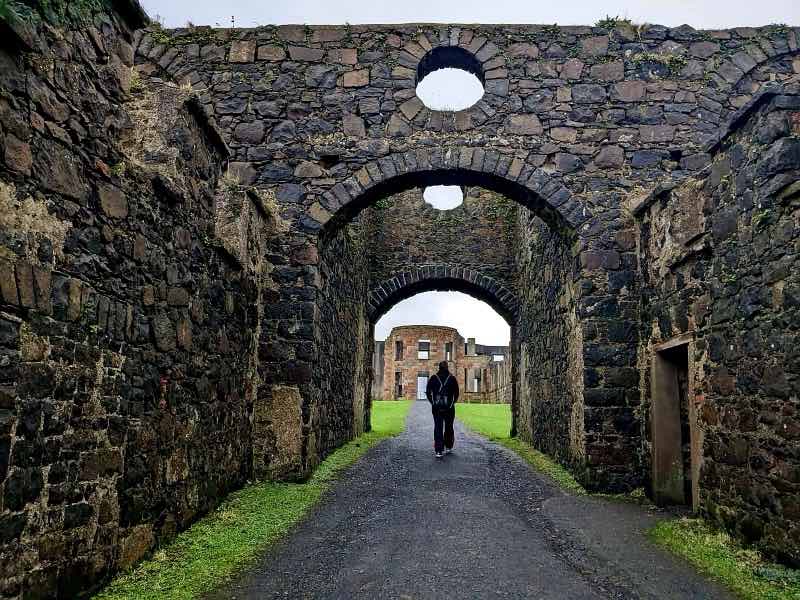
Mussenden Temple
Mussenden Temple – Cliffside Architectural Marvel
The Giant’s Causeway is a must-see sight in Ireland, and many tourists visit the usual hotspots along the way such as Dunluce Castle, Carrick-a-Rede Rope Bridge, and the Bushmills Distillery. However, there is another Ireland hidden gem that often goes unnoticed – Mussenden Temple.
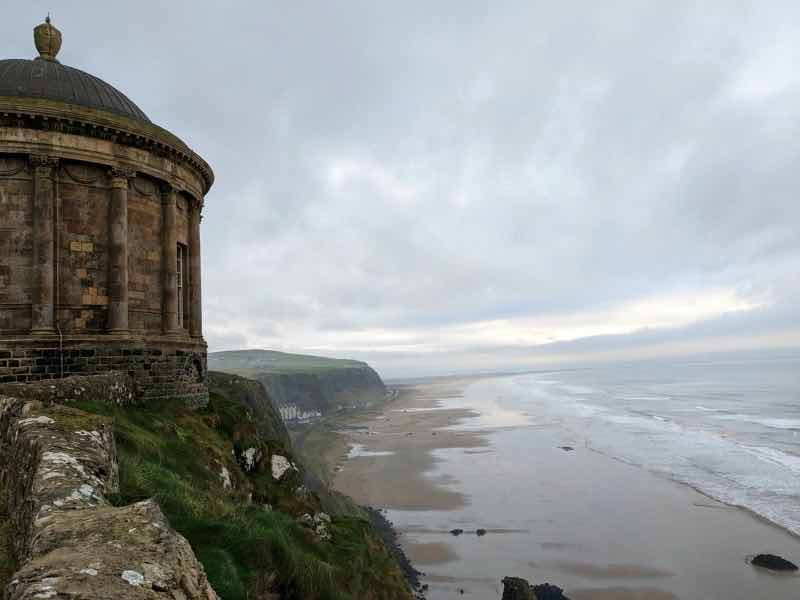
Mussenden Temple
Only 40 minutes from Derry City, the Mussenden Temple is a Greek-style temple built in the 19th century. What makes this must-see sight in Ireland so special is the location as it was built on the edge of a 120-foot cliff overlooking the Atlantic Ocean and Downhill Strand beach below. It offers some of the best panoramic views in Ireland of rugged coastline and the vast expanse of the Atlantic Ocean.
Mussenden Temple is also surrounded by the ruins of Downhill House, an 18th-century mansion that was once the Earl Bishop’s residence. Visiting Mussenden Temple and the surrounding Downhill Demesne is free of charge, except for a parking fee.

Newgrange entrance
Newgrange: Ancient Passage Tomb of Ireland
Last on our list of Ireland’s hidden gems is a monument that is older than the great pyramids of Giza. Built over 5000 years ago, the Newgrange complex is located in County Meath and is only an hour’s drive away from Dublin.

Newgrange
The megalithic monument is part of a larger archaeological site called Brú na Bóinne (meaning “Palace of the Goddess Boann” in Irish) and is Ireland’s second UNESCO World Heritage Site. Newgrange is a massive tomb constructed from large stones and covered in earth. But what makes Newgrange so special is that every year on the winter solstice (December 21st), the rising sun sends a beam of light through a small hole above the entrance and illuminates the entire chamber for about 17 minutes. This phenomenon is known as the “Newgrange Solstice Illumination.”
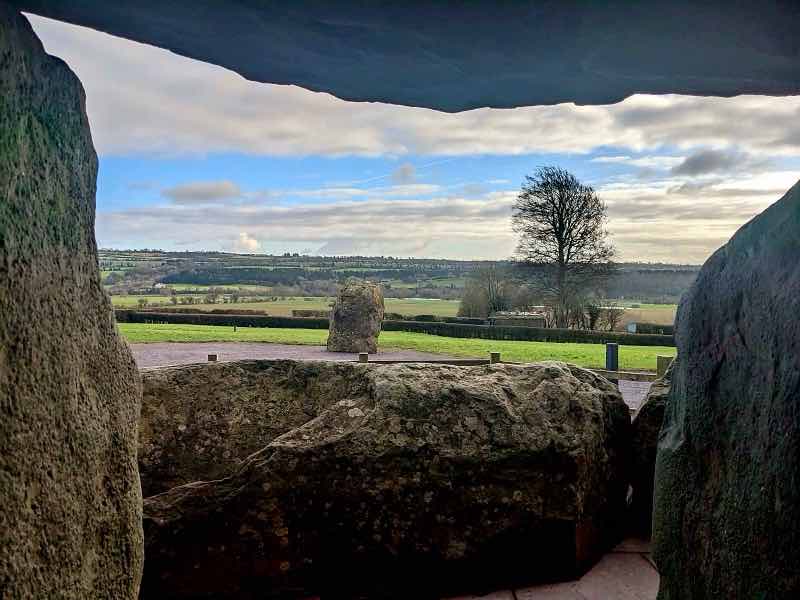
Newgrange entrance from inside
Furthermore, inside the chamber and passageway of Newgrange, there are many triskelions carved into the walls. This iconic Irish symbol is known all across the world and is believed to mean life, death, and rebirth. Similar to the Drombeg Stone Circle, Newgrange’s impressive structure is a remarkable example of ancient engineering with precise alignment to the winter solstice. The fact that this was built over 5000 years ago is truly remarkable.
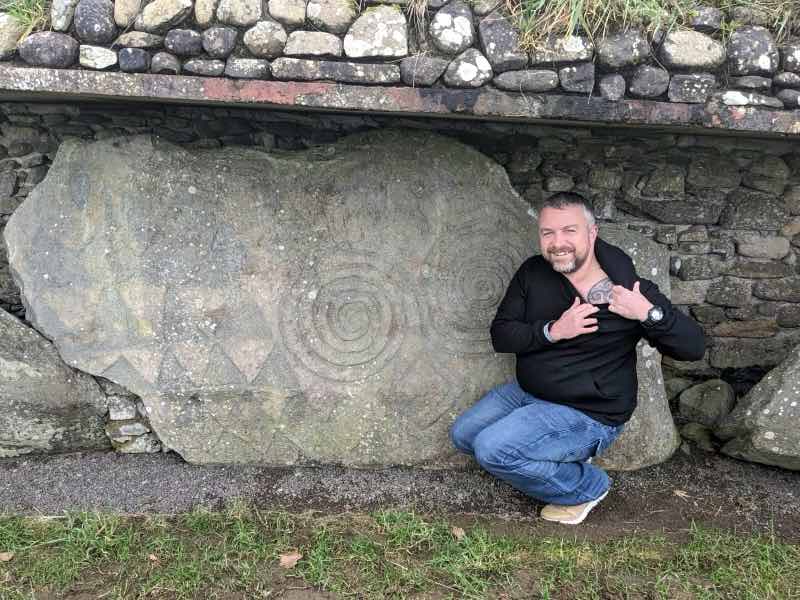
Triskelion symbol
Make sure to book tickets in advance because tickets are limited daily.
Conclusion
This guide showcases ten of Ireland’s hidden gems, yet all are easily accessible, and offer a unique insight into Irish history and culture. Most are free to visit. From the breathtaking Cliffs of Slieve League and Ben Bulben Table Mountain to the ancient megalithic wonders of the Drombeg Stone Circle and Newgrange Tomb, these fantastic must-see sights will provide you with unforgettable memories when visiting Ireland.



 5 Free Attractions to Visit in Barcelona
5 Free Attractions to Visit in Barcelona Top 5 Reasons to Visit the North Coast of Ireland
Top 5 Reasons to Visit the North Coast of Ireland Store Fronts in Ireland – Photos
Store Fronts in Ireland – Photos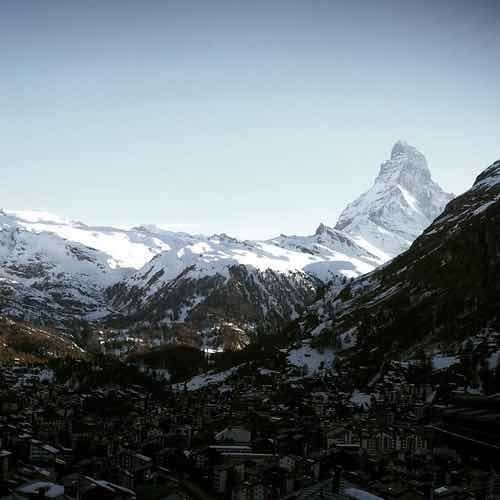 Discover the Magic of Winter in Zermatt: Luxury Chalets, Skiing, and Alpine Charm
Discover the Magic of Winter in Zermatt: Luxury Chalets, Skiing, and Alpine Charm
